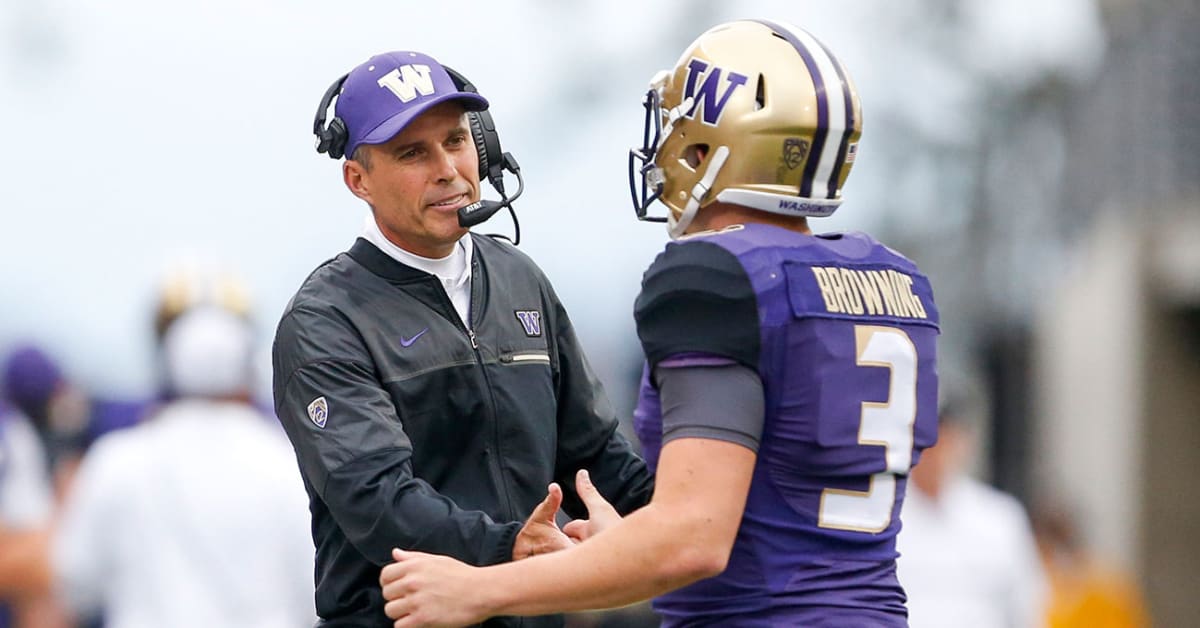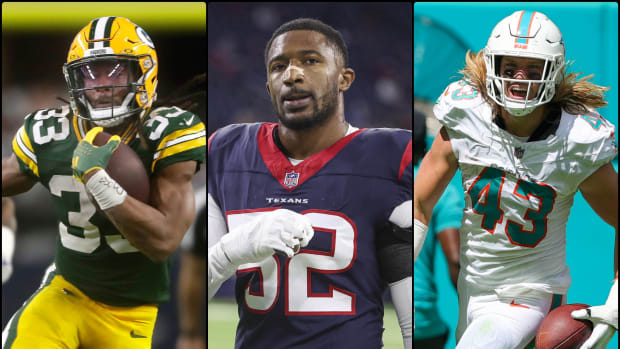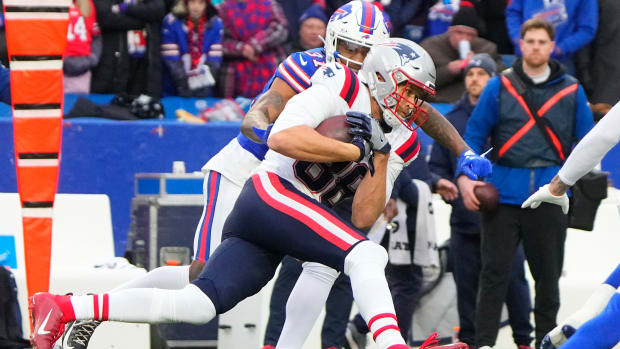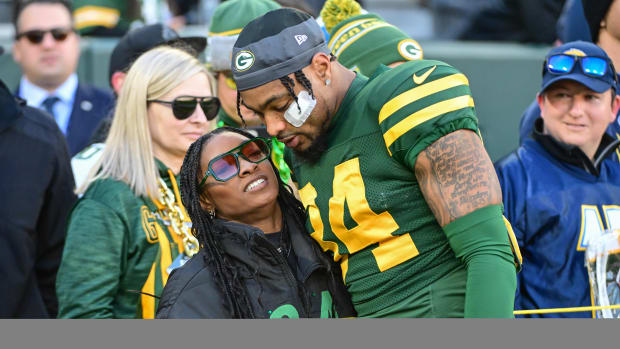Jake Browning’s College Coach Is Not Surprised By Success With the Bengals
Before Jake Browning started a million games at Washington, set numerous school and conference records, notched more than 100 total touchdowns and all the rest, his college coach, Chris Petersen, noticed Browning’s spirit as much as his skill. He had plenty of both, but how he worked, how hard and how frequently, stood out because he was just … extreme.
Browning graduated high school in Folsom, Calif., early, to head to Seattle and gain six months of extra preparation. That’s not unusual. But this is: Every time Petersen went to the football offices, which was often, of course, Browning seemed to be there. Before dawn. Long after dark. In between classes. Before and after practice. And he didn’t take that approach exclusively before his freshman season, during it or for his first few years. Every week Browning spent on campus unfolded exactly the same way.
“He was one of the hardest-working guys on the team,” Petersen said by phone Monday, marveling at how what he saw then connects to now. He corrected himself immediately. “Not one of. The hardest.”
Before Browning added to the surreal nature of this NFL season—joining Swifties, tush-pushing, the Chiefs’ stumble, the Cowboys’ ascendance and whatever else Mike McDaniel cooked up for the Dolphins’ offense this week—he wasn’t playing. His Pro Football Reference page makes him seem like a rookie, because not playing, in this instance, means no stretches, no games and no quarters; not playing, for Browning, means not even a single snap before this season. Through 10 weeks, before everything changed, he had managed to snag four of them.
His NFL career, if it could be called that before this month, started in 2019. It included stops in Minnesota (undrafted free agent, practice squad, waived, re-signed to a reserve/futures contract, waved again) and Cincinnati (practice squad, another reserve/futures contract, waived again, another reserve/futures contract). All that led to this summer, when Browning proved his patience worth it, when he beat out Trevor Siemian to back up Joe Burrow in another Bengals season of great promise. No, this wasn’t a starting gig. He couldn’t have expected one. It was, instead, proof of the exact notions Petersen lays out, intrinsic elements that allowed Browning to wait and work and believe when very few still did.
Petersen, like most every football fan in the world, knew that Burrow had torn ligaments in his right wrist against the Ravens (Week 10). Browning played well in relief, which didn’t surprise his college coach. He started against the Steelers (Week 11) and played well again. No surprise there, either. But those performances were one thing, a testament to Browning’s approach. The next two unfolded as if in an alternate dimension.
Against the Jaguars (Week 12), Browning outdueled Trevor Lawrence, throwing for 354 yards and accounting for two touchdowns, while completing 32 of his 37 pass attempts. The Bengals won in overtime, climbing back into the bottom of the muddled AFC playoff picture. Browning won conference player of the week honors, becoming only the 10th player in NFL history to finish a game with more than 350 yards and a completion percentage over 85. He also became the first University of Washington QB to win that award since Mark Brunell, in 2006. And, for all the professional football evaluators who questioned his arm strength, or his arm strength in relation to his accuracy downfield, Browning attempted seven throws of over 10 yards and completed each one.
The encore came against the Colts (Week 13). Other than one scary moment, when Browning’s thumb locked up on him during a scramble, forcing him to briefly leave the game in the fourth quarter and receive treatment in the locker room, he balled out again, providing more proof that the magical night in Jacksonville was no fluke. This time he completed passes at a 75% rate, accounted for three scores and threw for 275 yards. Cincinnati, meanwhile, trounced another playoff contender, as Browning made league history once more. Only two quarterbacks since 1950 have posted a completion percentage above 70 and a passer rating above 95 in each of their first three career starts. Chad Pennington is one. Now Browning is the other.
Watch the NFL with Fubo. Start your free trial today.
Surely, this level of success wowed Petersen as much as the rest of the football-watching nation. Or … maybe not. “Jake Browning is the guy who’s not going away,” Petersen says. “What he needed was an opportunity, and I knew, if he was ever given one, he wasn’t going to flinch. The whole thing is not surprising.”
Well, then. Petersen took over UW in 2014. Browning arrived that spring. He started 12 games as a true freshman in ’15 and threw for nearly 3,000 yards. Petersen describes that season as “chaotic,” with a new quarterback and second-year coaches and, at one point, 11 freshmen starters. He needed to get everyone aligned. Losses in close games didn’t help, and half of UW’s six defeats came by six or fewer points.
After the season, frustration lingered. Petersen couldn’t figure out why the skill he saw in practices hadn’t always translated in games. He resolved to spend as much time as it took in his office, pouring over film, until he figured out a better way. Watching his team, the one that had barely made a bowl game, he didn’t find one area where they were terrible. Instead, he saw a program that was “close.” Browning, he also noticed, was “figuring this out fast.”
The next season (2016) proved Petersen’s instincts right. Browning was elite. Washington finished the season ranked fourth, as in, nationally. That also marked the last time before this year that the Huskies made the College Football Playoff. “That was finally getting everybody aligned and believing we could play a certain way,” he says. “And one of the pillars of the whole thing was Jake. Him not being swayed or discouraged by anything that was going on. He just kept at it.”
By the end of four seasons, Browning had won more games as a starting QB (39) than anyone in Pac-12 history. He had thrown for more than 12,000 yards. He was durable, having started all but one game over his college career. He was prolific, collecting more passing yards than any signal-caller in a program with no shortage of great ones. But when the 2018 NFL draft ended, not a single team had picked him.
Petersen generally stays out of evaluating his own players at the professional level. He knows there are differences between the NFL and major college football. He has seen guys work out both ways compared to expectations, some better than, some worse. What didn’t make sense to him about Browning’s evaluations were the specific criticisms. Build was an issue? Arm strength? Decision-making? That wasn’t Browning, not the kid he knew.
“I was really surprised he didn’t get drafted,” Petersen says. “Like, What am I missing here? I knew this guy could be somewhere in the NFL. And … not drafted? That made no sense to me.”
Petersen, now a college football analyst for Fox Sports, still never shut the door on the possibility that Browning would achieve NFL success. He believed strongly that if Browning found an opportunity, he would shine once more. That it happened during another renaissance of Washington’s football program, the seeds of which he and Browning and so many others planted starting in 2014, makes the whole thing a kick to watch. Michael Penix Jr. finished second in the Heisman Trophy voting. The Huskies will play Texas in another CFP semifinal. They haven’t lost. Browning has, but only once, and the fact that he did lose means he’s playing! “Washington’s in a really cool place,” Petersen says. “And with the right people there, which they have, you can do some really special things.”
In Browning, Petersen also sees improvement, whether through accuracy, consistency, footwork or anything else. His arm looks plenty strong, and the uptick didn’t happen by accident. Add up all the improvements. Combine the gains. And, no, he’s not surprised, not even after Browning went more than four years between starts.
As the interview wraps up, Petersen’s asked whether Joe Burrow might want to fear a similarly illogical outcome. Can Jake Browning go Lou Gehrig and make Joe Burrow an NFL version of Wally Pipp? Petersen laughs. Stranger things have happened, with Browning, this season. “I would have a hard time saying that,” Petersen says. “But this is an opportunity for 31 other teams to look at this guy and go, Oh, yeah, he can play at this level.”
And those who do? “They’re gonna see that this guy is an NFL-level quarterback.”








































